One of the most important mourning rituals observed in Iran during the month of Muharram is Nakhl-Gardani that is recognized as one of the symbolic Iran's intangible heritages.
Iran (IMNA) - Nakhl (means date palm tree in Farsi) symbolizes the coffin of Imam Hussein (PBUH) and his martyred companions; it is a wooden structure similar to a cypress tree in shape that is heavy decorated with black fabrics, swords, daggers and mirrors carried on the shoulders of hundreds of male mourners in a circular mode.
The structure is called Nakhl since it's believed that the holy wounded body of Imam Hussein was laid under the shade of a date palm tree after his martyrdom, or because his blessed body was carried using a coffin made of branches of a date palm tree; the only material available in Karbala at that time. Also, Muslims believe that Imam Hussein's remembrance remains eternal, so the Nakhl is formed like the shape of a cypress tree which symbolizes the stability and eternity of life.
Nakhl-gardani is also rooted in a mythological ritual that was the Persian hero Siavash’s annual funeral who was murdered on a wrong defamation; He is the symbol of innocence in Iranian literature.
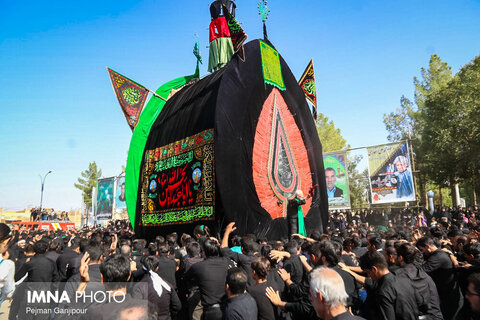
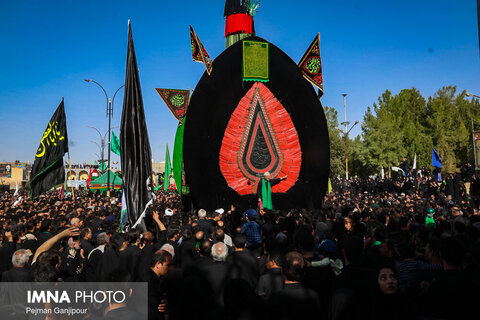

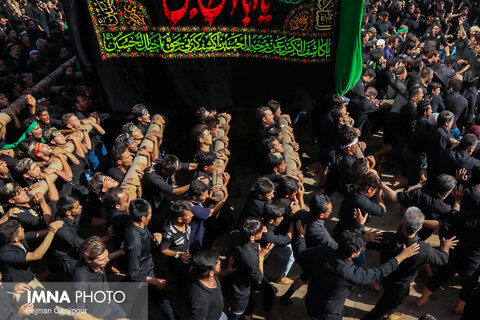
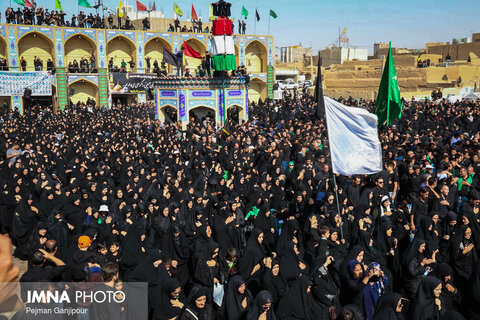
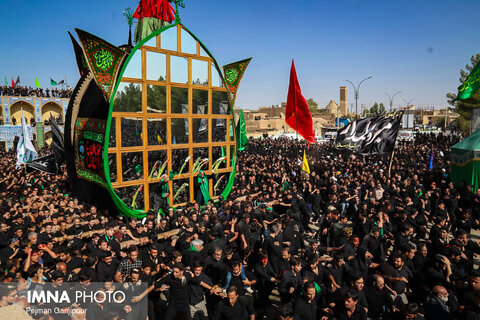
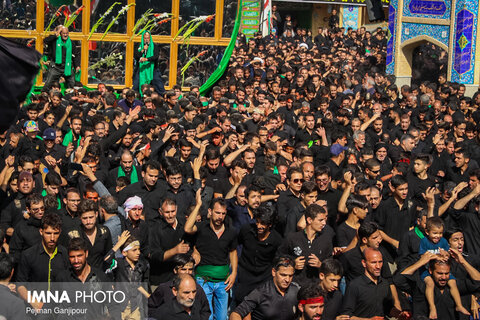
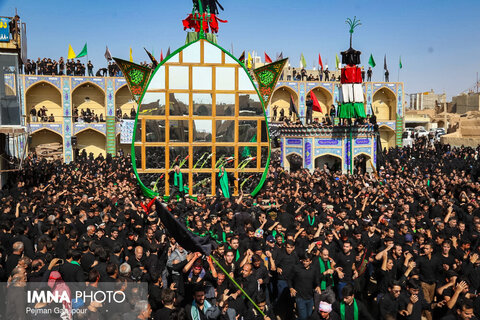
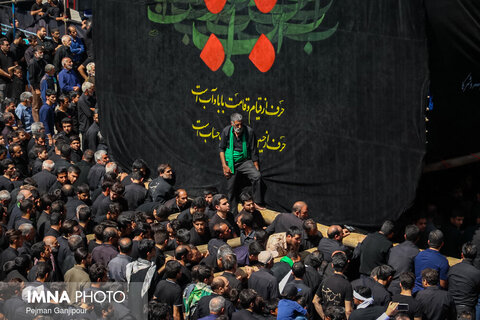
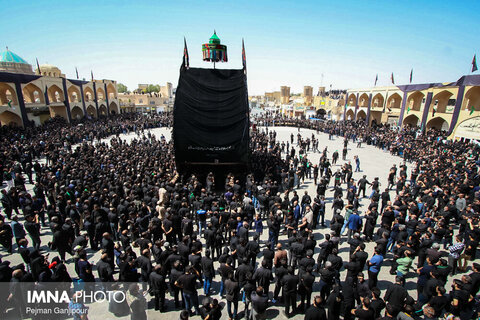
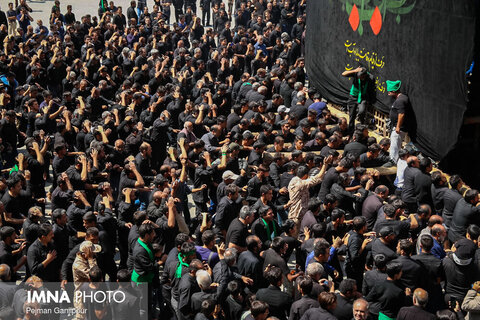
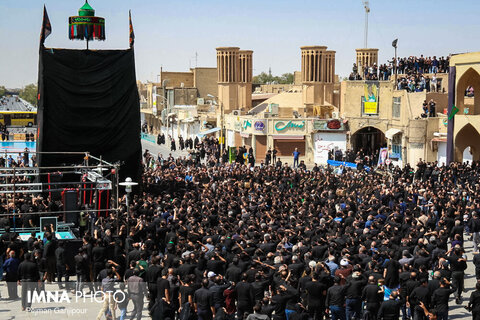

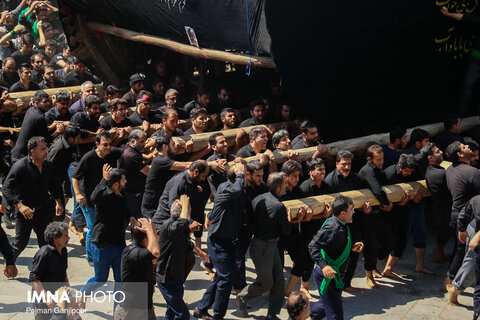
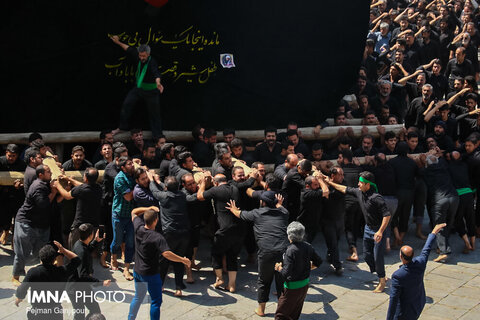
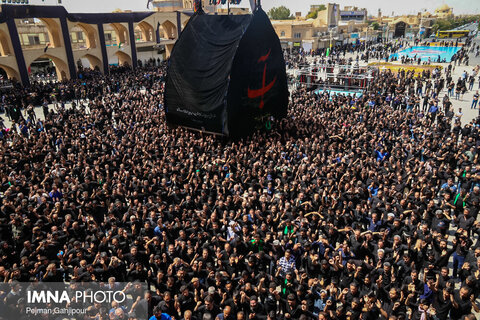
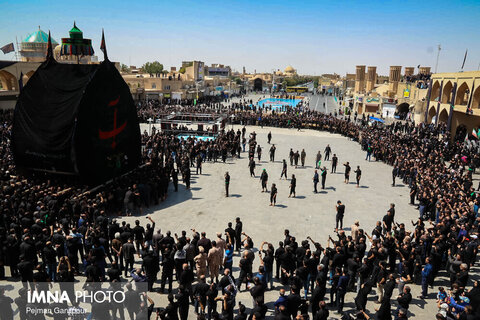

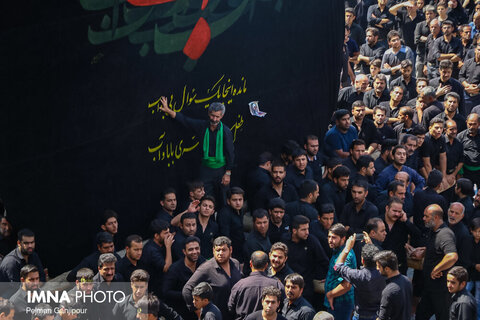
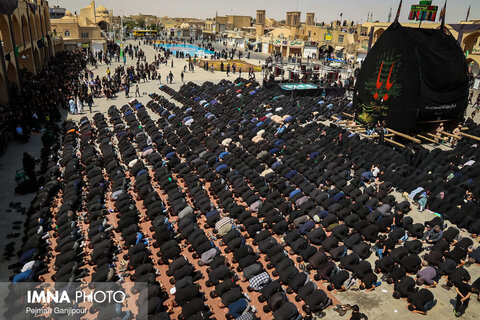

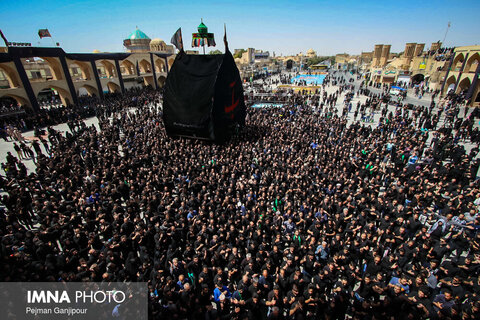

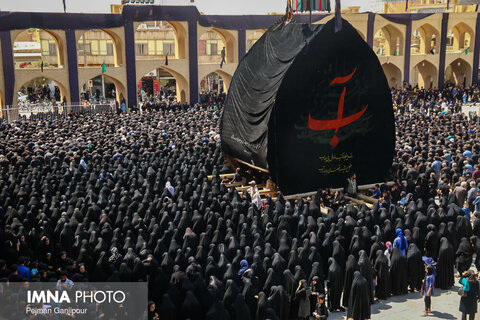
Your Comment